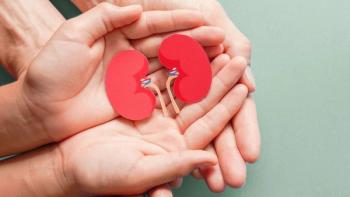
Personalized Therapy Helps Tailor Treatment for GIST

Dr. Breelyn Wilky explains that personalized treatments are helping improve outcomes for patients with gastrointestinal stromal tumors.
Personalized treatment is helping improve outcomes for patients with gastrointestinal stromal tumors (GIST), as explained by Dr. Breelyn Wilky, director of sarcoma medical oncology at the University of Colorado Cancer Center.
Wilky emphasized that no two cases of GIST are exactly alike, even though it’s the most common type of soft-tissue sarcoma. “I describe my patients as snowflakes,” she said, meaning that everyone’s cancer is slightly different. These differences can influence both prognosis and treatment.
Factors like tumor size, location and growth rate help guide early treatment decisions, Wilky noted. Genetic mutation testing plays a key role as well, since around 80% of patients with GIST have mutations at diagnosis that activate a protein called KIT. Even within that group, subtle differences in mutations can affect how a tumor responds to certain drugs.
Wilky encouraged patients to talk with their care teams about their mutation reports to better understand which treatments may work best for their individual cancer.
Transcript:
How is personalized therapy changing the outlook for people living with GIST?
The key thing for patients is to recognize that even though you have GIST, the most common [sarcoma] tumor, everybody’s a little bit different. I describe my patients as snowflakes. While you may all be snowy and shaped prettily and all those things, everyone’s a little bit different. And that’s super, super important, and we’re only learning more about how important it is as we start to think about prognosis and treatments.
Some of the factors that play into this and how you’re going to do — how your disease will behave, what therapies might be good for you — some of it comes down to simple things like how big your tumor was, where it was located along the GI tract, or how quickly it was growing — what we call the mitotic rate. Those are some of the early things we use to establish these risk scores and predict things.
But then the role of mutation testing — so again, figuring out where in your GIST cell did the mutation happen. As I mentioned, 80% of patients have an activated or flipped-on switch for KIT, and 80% of those have the same sort of spot where the mutation is likely to happen. Even within that, there are subtle differences. Getting your mutation report, talking about that with your doctors, understanding what your treatment options are — is there any evidence that certain drugs might work better for your particular tumor than others? Those are the questions that you want to be asking.
Transcript has been edited for clarity and conciseness.
For more news on cancer updates, research and education,





